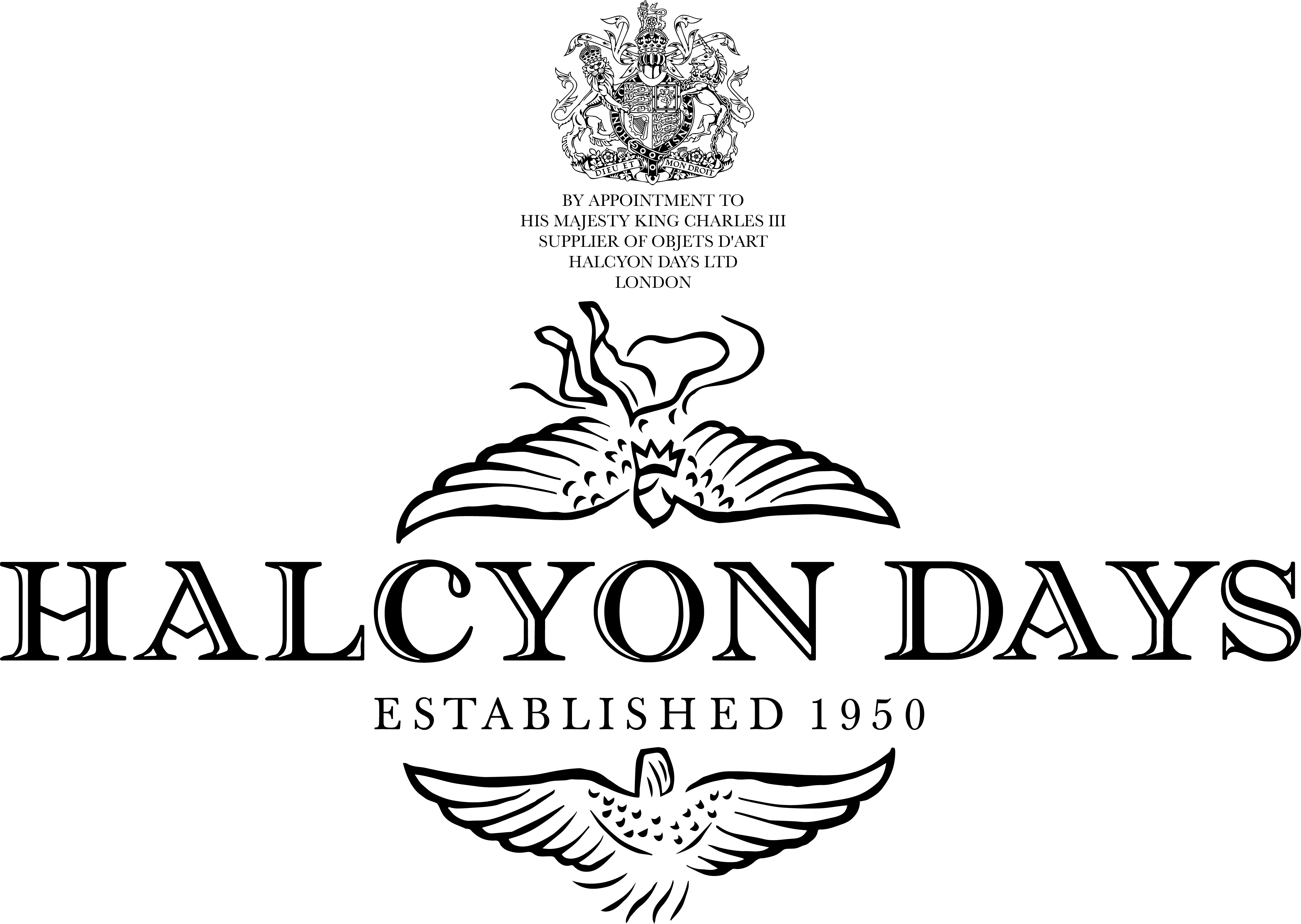In 1970, Halcyon Days were commissioned by the Queen Mother to create an enamel box depicting Clarence House, her London home. Soon after, special projects were ordered by other members of the household and we were consequently granted the Queen Mother’s Royal Warrant in 1972. By 1987, we held all four Royal Warrants that were in existence at that time. So began our company’s cherished, continued relationship with the Royal family which, today, sees us as one of only 14 companies to hold all three available Royal Warrants. Our 13 esteemed contemporaries include revered tailors, jewellers and car manufacturers. What sets us apart from them all, however, is that our three warrants recognise us as the sole historical suppliers of objets d’art to the Royal Family.
In this instalment of our ‘Chronicles from the Kiln’ series, we’re looking at the history and significance of the much coveted Royal Warrant, as well as considering the connotations with, and the meaning of, objets d’art: a term which gives us our unique identity in a prestigious group.

The Clarence House box commissioned for the Queen Mother in 1970. Where our cherished relationship with the Royal family began.
While in its original French objet d’art can refer to a work of art in a general sense, in English the phrase has been adopted to mean decorative pieces excluding paintings, prints, large sculptures and drawings. Objets d’art are often small, elaborate items including carvings, clocks, watches and, more relevantly to our own offering, enamel boxes.
Key also to the identity of objets d’art is that they are not defined by any intrinsic use (though we do suggest using our enamels, but more on that another week). They are certainly not a necessity, nor in the parlance of the last year are those who create and sell them deemed an essential service. However, it is perhaps in their impracticality that their true value is found. Small, beautiful items which, like one’s favourite song or painting, contain the ability to arouse joy, fondness, escapism and nostalgia.
The term objets d’art serves aptly to elicit the intricate, impressive artistry that brings our enamel boxes into existence. Producing each enamel is a real labour of love, as they undergo multiple firings in the kiln, hand-painting, and are handled by our artisans up to one hundred times before they leave the doors of our factory in Stoke-on-Trent. This results in timeless pieces to be treasured; true artworks in their own right.
 The First of May 1851 Box. Each enamel is handled up to one hundred times before leaving our factory.
The First of May 1851 Box. Each enamel is handled up to one hundred times before leaving our factory.
As mentioned earlier, supplying those objets d’art to the Royal household is why we proudly hold all three Royal Warrants today. What exactly are those warrants though, and how did they come to be?
Royal Warrants of Appointment, as they’re called in full, are granted by the most senior members of the Royal family to those supplying goods or services to the household. Holding a warrant enables suppliers to advertise the fact that they do so, as is visible on our packaging and the bottom of all of our products. This privilege has been granted to chosen businesses since the 15th century. However, the granting of Royal patronage was practiced as early as Medieval times with Henry II giving the first recorded charter to the Weaver’s Company in 1155. In the late 1400s, the system became more formalised and William Caxton, who introduced the printing press in England, received one of the first recognisable Royal Warrants when he became the King’s official printer in 1476.

The three Royal Warrants in use today, as seen on our packaging and products
Royal Warrants soon began to gain much respect and became greatly sought after. They acted as a valuable external endorsement of product quality and communicated kudos and reliability to the general public. As such, holders started advertising their warrants on packaging and premises to great effect.
The success and enhanced reputation gained from holding one or more warrants proved tempting for chancers too and it led, eventually, to a crackdown on fraudulent claimants in 1840. Formed that same year, resulting from the growing need for regulation, the Royal Warrant Holders Association is, as of 2021, chaired by Halcyon Days CEO Pamela Harper. Working closely with Buckingham Palace, the association assures the continued existence of the Royal Warrant as a treasured, respected institution and one that continues to conjure up the associations of excellence and dependability that have always defined it.


2 comments
Helen Norton thank for your comment. Please be in touch with us at customerserviceshalcyondays.co.uk and we will see what we can find out for you!
Hello, I just sorted through a box of items that I purchased at an auction and found a “halcyon days London” stamped enamel and brass quill holder. I am unable to find anything on the internet as to its value. Do you have an email address that I could send a picture?
Leave a comment